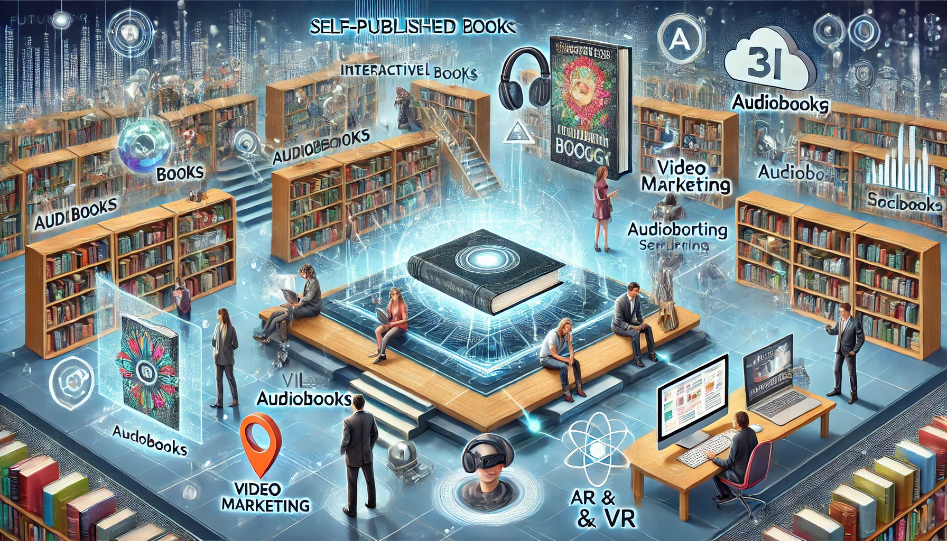Transforming the Publishing Industry: Embracing Innovation and Technology

The publishing industry is undergoing a profound transformation driven by technological advancements and innovative practices. From self-publishing and interactive content to the revolutionary impact of audio and video, new monetization technologies, and the transformative power of artificial intelligence, the landscape of book creation, distribution, and consumption is being redefined. This article explores ten key trends and technologies shaping the future of books and publishing.
1. Self-Published and Interactive Content
The rise of self-publishing platforms has democratized the publishing industry, allowing authors to bypass traditional gatekeepers and bring their work directly to readers. Self-publishing offers control over the creative process, faster time-to-market, and higher royalty rates. Interactive content, such as embedded videos, hyperlinks, and multimedia elements, enhances reader engagement and provides a more immersive experience. Platforms like Amazon Kindle Direct Publishing (KDP) and Wattpad have empowered millions of authors to publish and promote their work independently.
2. The Audio and Video Revolution
The popularity of audiobooks and video content has skyrocketed, catering to the on-the-go lifestyles of modern consumers. Audiobooks provide a convenient way for readers to consume content while commuting or multitasking. Platforms like Audible and Google Play Books have seen exponential growth in audiobook sales. Similarly, video content, including book trailers and author interviews, has become a powerful marketing tool, offering a dynamic way to attract and engage readers.
3. New Technologies for Monetization
Monetization strategies in the publishing industry are evolving with the advent of new technologies. Subscription models, crowdfunding, and microtransactions are becoming increasingly popular. Services like Patreon allow authors to receive ongoing support from their fans, while platforms like Kickstarter enable funding for specific projects. These innovative monetization methods provide authors with diverse revenue streams and greater financial stability.
4. Automated Text Analysis
Automated text analysis tools leverage natural language processing (NLP) and machine learning to provide valuable insights into manuscripts. These tools can identify grammatical errors, suggest improvements, and even analyze the emotional tone of the text. Platforms like Grammarly and ProWritingAid offer authors enhanced editing capabilities, streamlining the revision process and improving the overall quality of their work.
5. Content Personalization
Content personalization in books and publishing tailors reading experiences to individual preferences. Personalized recommendations, adaptive learning materials, and interactive storytelling adjust content based on user behavior and feedback. This approach increases reader engagement and satisfaction. Services like Amazon's personalized book recommendations and adaptive learning platforms like DreamBox Learning exemplify the potential of personalized content in the publishing industry. For more insights, read Artificial Intelligence: Personalized Reading Experience.
6. Effective Data Strategies for Publishers
Data-driven strategies are essential for publishers to understand reader preferences, optimize marketing efforts, and improve sales. Analytics tools track reader behavior, sales trends, and market demand, providing valuable insights for decision-making. By leveraging big data, publishers can tailor their offerings to meet the evolving needs of their audience. Companies like BookBub and Goodreads use data analytics to provide targeted book recommendations and promotional campaigns.
7. Augmented Reality (AR) and Virtual Reality (VR)
AR and VR technologies are revolutionizing the way readers interact with books. AR can bring static images to life, providing interactive elements that enhance the storytelling experience. VR offers immersive environments where readers can explore fictional worlds. These technologies have the potential to create a more engaging and interactive reading experience. Examples include AR-enhanced children's books and VR adaptations of popular novels. Discover more in The Evolution of Storytelling: Virtual and Augmented Reality VR AR in Books.
8. Machine Learning and AI Algorithms
Machine learning and AI algorithms are transforming various aspects of the publishing industry, from content creation to marketing. AI-powered tools can analyze market trends, predict bestseller potential, and optimize pricing strategies. Additionally, AI-driven content creation tools can generate written content, offering authors assistance in brainstorming and drafting. Companies like OpenAI and IBM Watson are at the forefront of integrating AI into publishing.
9. Blockchain Technology
Blockchain technology offers new possibilities for secure and transparent transactions in the publishing industry. Smart contracts can automate royalty payments, ensuring that authors receive fair compensation for their work. Blockchain can also provide a decentralized platform for copyright protection, reducing piracy and ensuring the authenticity of digital content. Platforms like Publica and Po.et are exploring the potential of blockchain in publishing. Learn more in How Blockchain Technology is Revolutionizing Writing, Publishing, and Selling Books.
10. Cloud Computing Technology
Cloud computing technology provides scalable and flexible solutions for the publishing industry. Cloud-based platforms facilitate collaboration, storage, and distribution of digital content. Authors and publishers can access and manage their work from anywhere, streamlining the publishing process. Services like Google Cloud and Amazon Web Services (AWS) offer robust cloud solutions tailored to the needs of the publishing industry. For further details, read Cloud Computing Technology for Books and Publishers.
Final Words
The convergence of these technologies is reshaping the landscape of books and publishing, offering unprecedented opportunities for authors, publishers, and readers. By embracing self-publishing, interactive content, and cutting-edge technologies, the publishing industry can continue to evolve and thrive in the digital age. Authors and publishers who stay informed and adaptable will be well-positioned to leverage these advancements, creating more engaging, personalized, and profitable reading experiences for their audiences.



